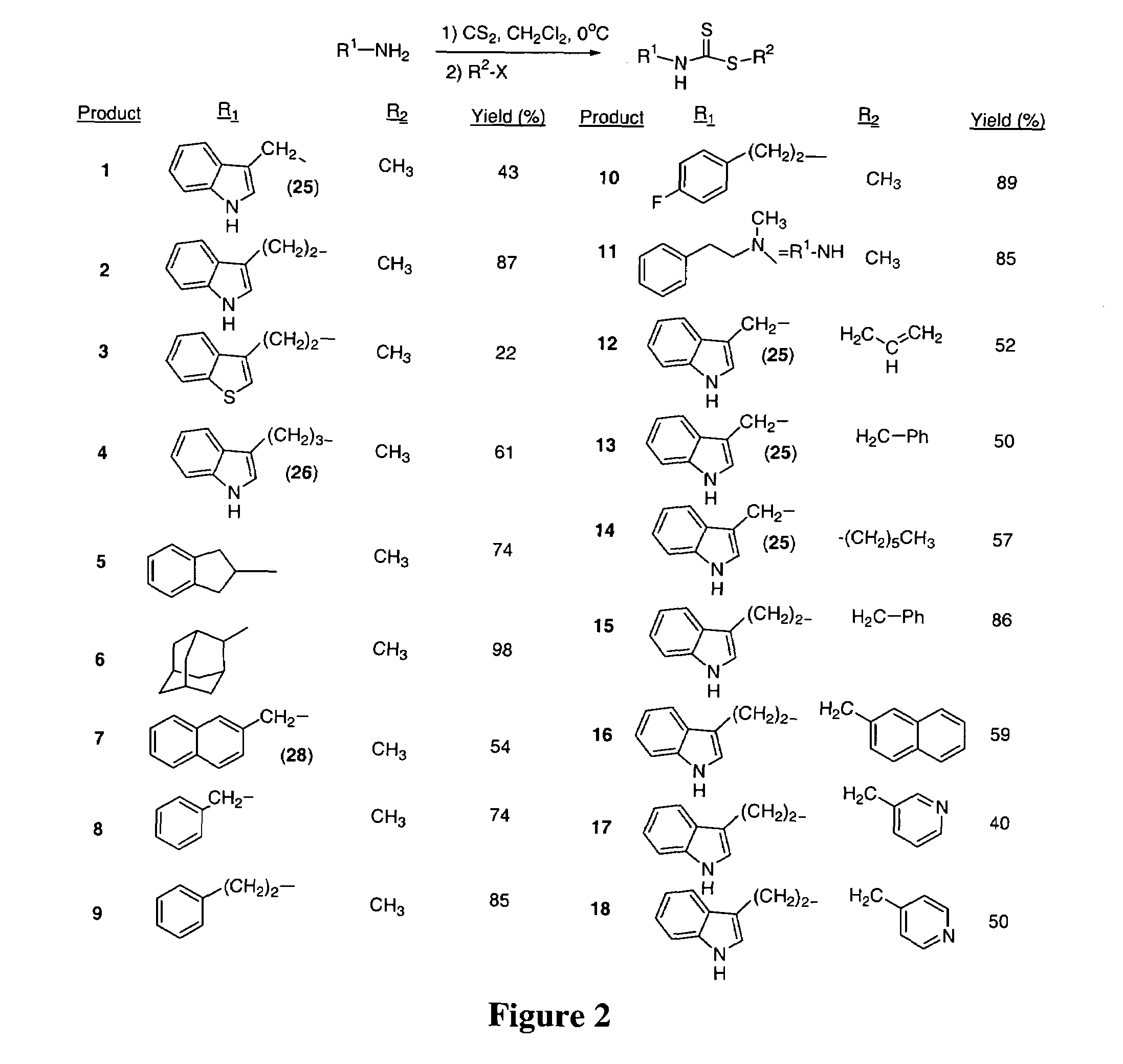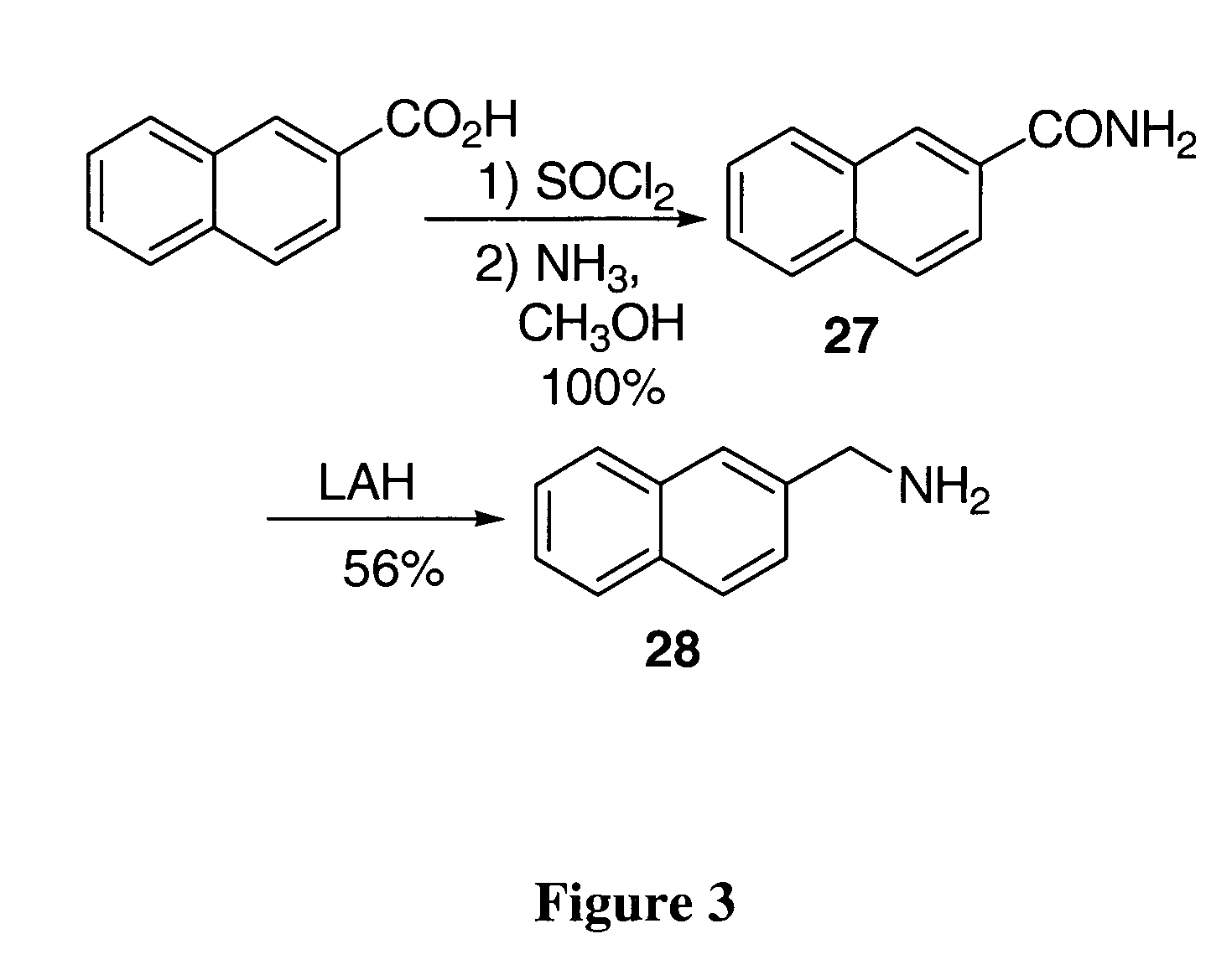IDO inhibitors and methods of use thereof
a technology of idoinhibitors and inhibitors, applied in the field of oncology, can solve the problems of poorly understood immunosuppression by tumors and poorly explored mechanisms by which tumors may escape immune surveillan
- Summary
- Abstract
- Description
- Claims
- Application Information
AI Technical Summary
Benefits of technology
Problems solved by technology
Method used
Image
Examples
example 1
Synthesis of Compounds
[0062]All reactants and reagents were commercially available and were used without further purification unless otherwise indicated. Anhydrous THF was obtained by distillation from benzophenone-sodium under argon immediately before use. Anhydrous CH2Cl2 and Et3N were obtained by distillation from calcium hydride under argon. Methanol was dried over Mg and distilled under argon. A saturated solution of HCl in CH3OH was made by bubbling HCl through a drying tube, filled with CaCl2, into a cooled flask of anhydrous CH3OH under a stream of argon. A saturated solution of NH3 in CH3OH was made by bubbling anhydrous NH3 into an Erlenmyer flask with a predetermined volume of CH3OH. Concentrated refers to the removal of solvent with a rotary evaporator at normal water aspirator pressure followed by further evacuation with a two-stage mechanical pump unless otherwise indicated. Yields refer to chromatographically and spectroscopically pure (>95%) compounds, except as othe...
example 2
Inhibition of IDO
[0097]Brassinin dithiocarbamate analogs were synthesized by adding an amine to carbon disulfide at 0° C., stirring for one hour, and then adding an alkyl halide. Modification of the indole core or alkane linker occurred by substituting different amines. Certain amines were commercially available while others required synthesis as described hereinabove. The indole-3-methanamine 25 of brassinin 1 was prepared through the reductive amination of indole-3-carboxaldehyde. Although there are several different reductive amination procedures reported in the literature, the procedure described in Mehta et al. was determined to be the most effective (Mehta et al. (1995) Carcinogenesis, 16:399-404; Schallenberg et al. (1983) Z. Naturforsch, 38b:108-12; Yamada et al. (1993) Heterocycles, 36:2783-2804; Kutschy et al. (1998) Tetrahedron, 54:3549-66). Homotryptamine 26, the amine reagent for 4, was synthesized in three steps from indole-3-propanoic acid following literature precede...
PUM
| Property | Measurement | Unit |
|---|---|---|
| thickness | aaaaa | aaaaa |
| thickness | aaaaa | aaaaa |
| pressure | aaaaa | aaaaa |
Abstract
Description
Claims
Application Information
 Login to View More
Login to View More - R&D
- Intellectual Property
- Life Sciences
- Materials
- Tech Scout
- Unparalleled Data Quality
- Higher Quality Content
- 60% Fewer Hallucinations
Browse by: Latest US Patents, China's latest patents, Technical Efficacy Thesaurus, Application Domain, Technology Topic, Popular Technical Reports.
© 2025 PatSnap. All rights reserved.Legal|Privacy policy|Modern Slavery Act Transparency Statement|Sitemap|About US| Contact US: help@patsnap.com



